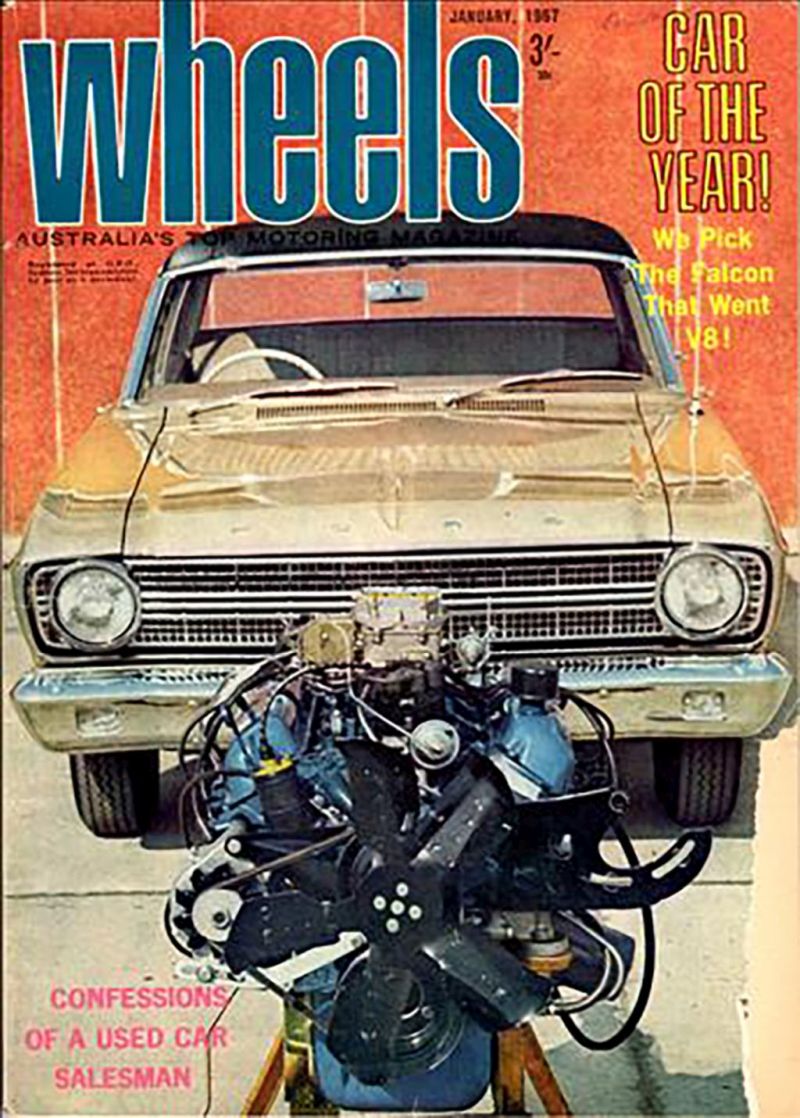Retro Stories by David Burrell
When the XR Falcon was released in September 1966 it established the dimensional and packaging template for locally built sedans and wagons that only disappeared when the final Holden Commodore rolled off the production line in October 2017.

It was a big, affordably priced, powerful, six-seater, Australian family sedan and wagon. It could be optioned to suit individual desires and displayed great driving dynamics. A V8 was available across the range. With its “Mustang Bred” long bonnet and short rear boot, stretched over a 111 inch/2820 wheelbase, the styling gave it a thrusting stance which Holden’s HR and Chrysler’s VC Valiant could not match.
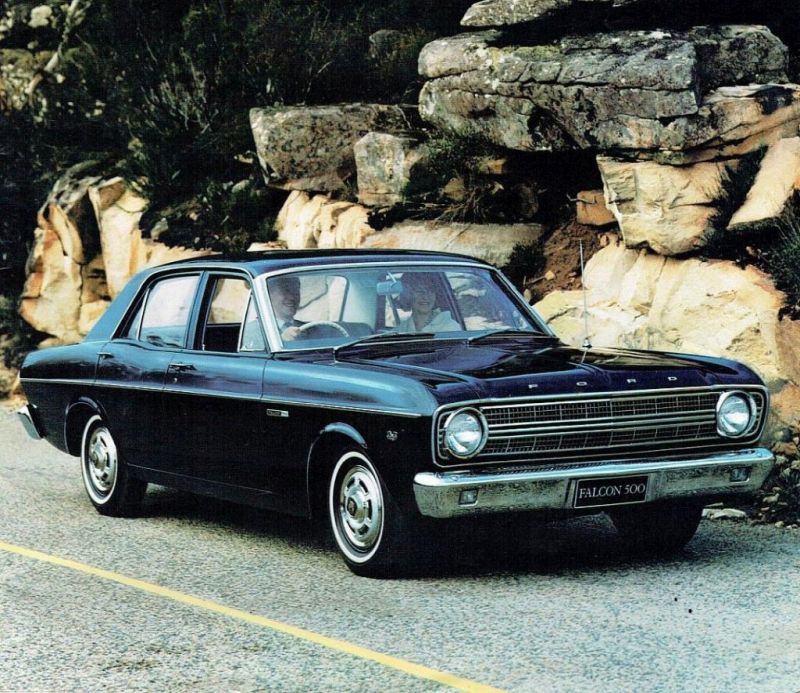
The Falcon’s progress from design to driveway starts in the USA in late 1963. Back then, the 1966 Fairlane was Ford’s priority and it was styled first. Its wheelbase was 116 inches/2946 mm. The US Falcon was essentially a short wheelbase version of the Fairlane. The US Fairlane and Falcon station wagon would share the same wheelbase (113 inches/2870mm) and sheet metal.
The Fairlane and Falcon were shaped by Gale Halderman and George Schumaker, under the director of Ford studio boss, Joe Oros. All three had been instrumental in styling the first Mustang. The photo below shows that the Falcon’s shape was finalised on 16th April, 1964, the same day that the Mustang was released.

Also on the Mustang’s design team was a 26 year old Jack Telnack, a rising star in Ford’s design world. In mid-1966 he was appointed Ford Australia’s first design director, just in time for the XR’s release. Apart from designing Australian Fords, Jack was responsible for building Ford’s new design studios. The photo below shows Jack inspecting the construction.

Back in Australia, Ford’s senior executives were able to plan the changes to the sedan to suit the local manufacturing capabilities. With the US Falcon wagon sharing its dimension with the Fairlane wagon, Ford Australia had to go it alone for its wagon, utility and panel van. They would all be based on the sedan’s dimensions.
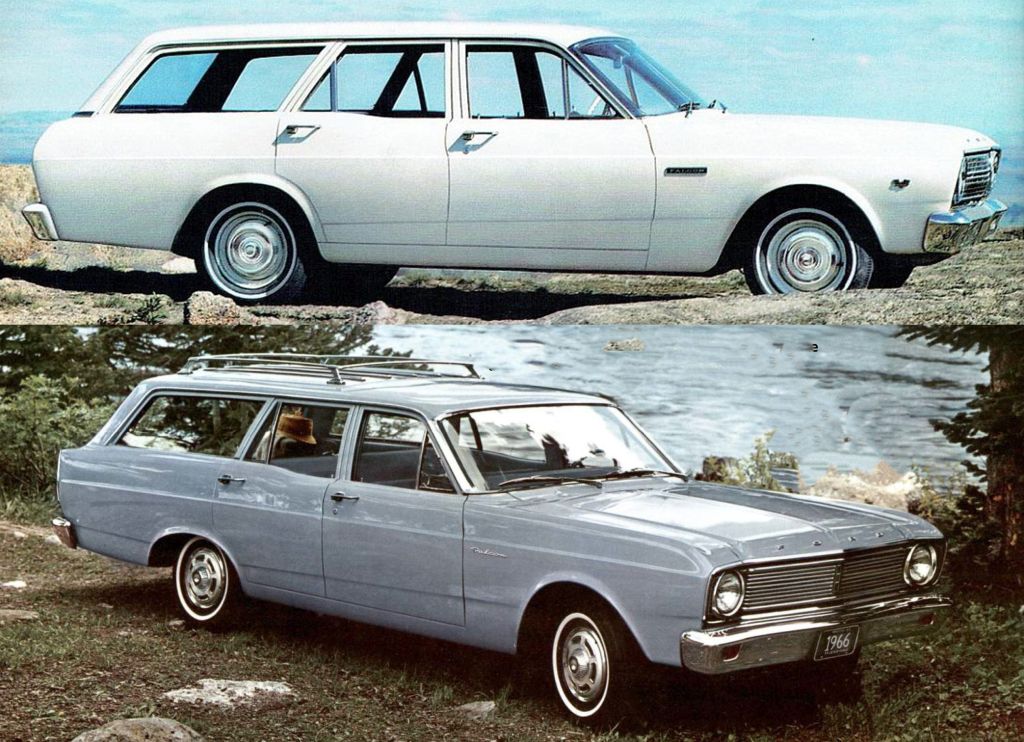
David Ford (no relation) worked on the local XR program as a product planner and engineer. I interviewed him for my Design to Driveway series on Shannons Club TV. Here is what he revealed about the car’s development.
“The XR Falcon… was a huge step up in terms of vehicle concept, much better than the original XK was. It was a much more robust vehicle sharing a lot of the commonality of the US Fairlane. It had more capable componentry already built into the vehicle. It was an ideal package for the Australian market. It improved vehicle interior size, and it fitted perfectly where the Australian market was wanting to go and would give Ford quite an advantage.
David says that Ford Australia:
“Took the basic car (and) modified it quite significantly in several areas to just add a little bit more ruggedness to it. (We) changed the design by extending the crease line right down the side of the vehicle to give it a lengthier appearance.”
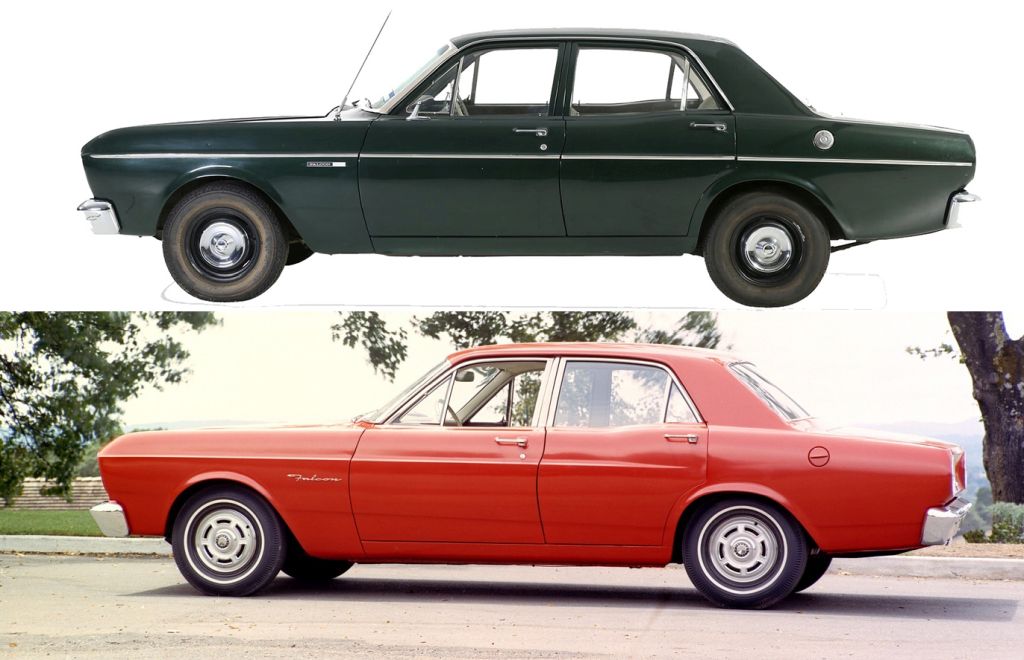
Other modifications included a revised rear sub-frame to ensure increased rear seat passenger space, a larger capacity fuel tank, wider front seat, interior bonnet lock, different grille and ornamentation, Australian trim design and colour schemes. The wagon was all Australian and sat on the sedan wheelbase. The ute and panel van were totally Australian, too.
David spoke of another major change:
“We repackaged the spare tyre, which stood upright in the boot of the U.S. car and totally blocked the luggage.”
With typical Australian ingenuity they decided to locate the tyre into the fuel tank. David explained what they did.
“The U.S. said was impossible to stamp the fuel tank with the (indentation for the) spare tyre in it. But some of the guys in Geelong manufacturing worked miracles to do that.”

Overall, David says of the XR:
“I think it set a new standard. Rather than us chasing Holden, it put something out in front of Holden that they had to start chasing. We started to leapfrog and confidently move forward with what Bill Burke (Ford’s managing director) was teaching us as our mantra, which was “Beat Holden beat Holden”. And we really felt with the XR that we were last on our way.”
And set a standard it did. Over at Holden, in March 1966, the new HK range was all but finalised. It sat on a 108 inch/2743mm wheelbase. That’s when Holden’s design director, Joe Schemansky, saw photos of the US Falcon and realised the local implications of its dimensions. It meant the HK would look and be shorter than the Falcon. Joe’s fears would have been amplified when the May1966 edition of Modern Motor hit the newsstands boasting a triple scoop: XR Falcon, HR Holden and VC Valiant. The magazine’s photos and story emphasised the larger size of the Falcon.
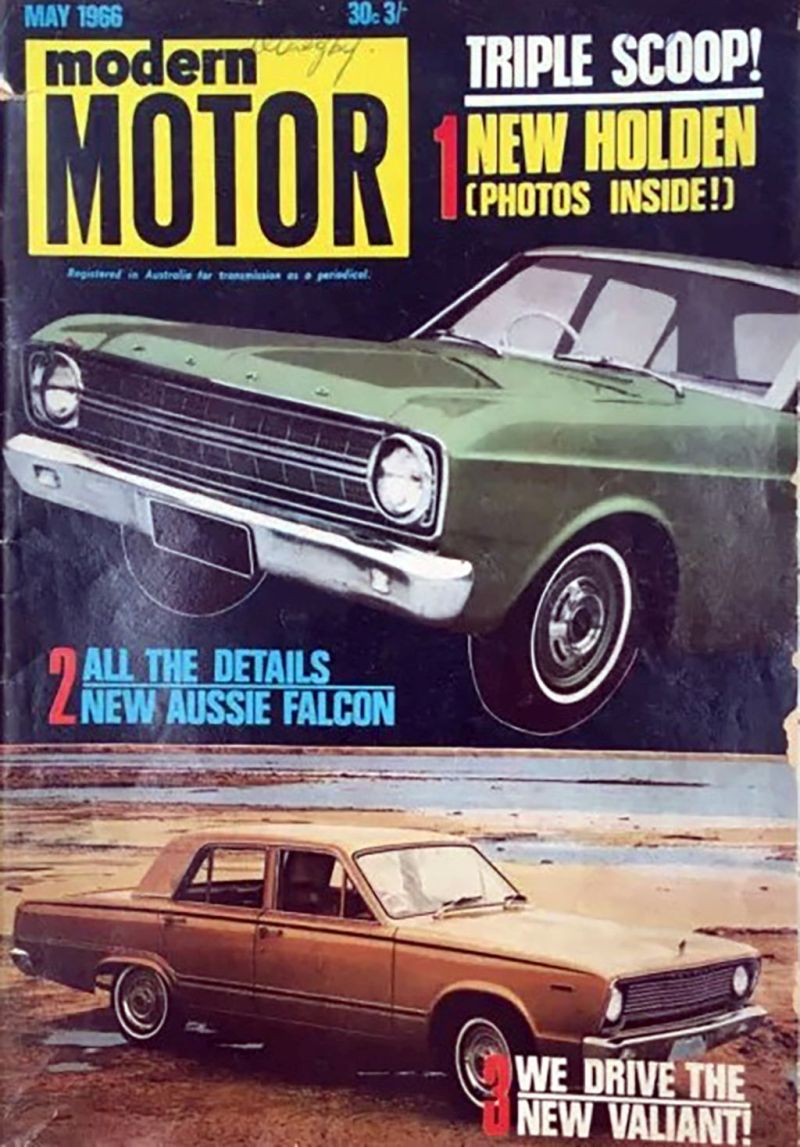
After convincing Holden’s Managing Director, Max Wilson, of the need for change, Joe immediately ordered an extra three inches/76mm be added to the HK’s wheelbase ahead of the front doors. On the tape drawing, below, from Holden’s design studio files, the front fender extension is highlighted in red. The original shorter fender length is green.
It was an expensive change to make so late in the car’s development programme, but there was no way GMH, as market leader, could contemplate selling a smaller car than its main rival. It was the first time a Holden design had been changed to match a competitor’s design. It also delayed the car’s planned 1967 release, pushing it into 1968.
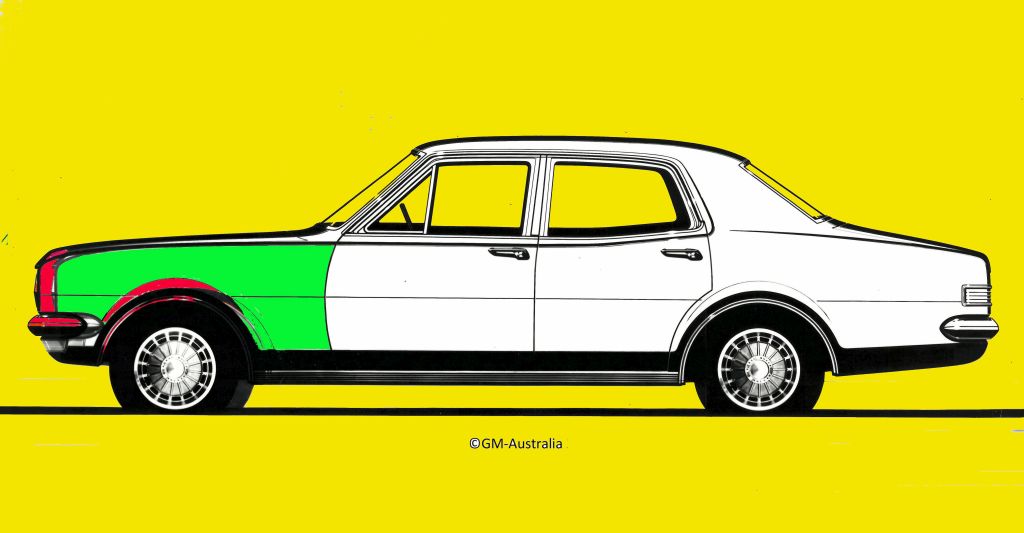
Chrysler Australia were also caught off guard. They’d committed their new VE Valiant to a 108 inch/2743mm wheelbase, and did not have the money to invest in matching the Falcon’s dimensions until the VH range in 1971.
When I chatted with David Ford, I asked hm to share his views on what made the XR Falcon, and its successors, increasingly appealing to buyers? He said:
“(We) had to create the image that it was Australian, that it was a car suitable for the family, that it was easy and economical to run, but still had basic good performance. You could use it in the outback, you could use it in the city, you could tow with it. But then you had to create a body appearance, which said that to somebody. Therefore, it had to look like it’s a good package size inside, it’ll take people. But you don’t want it to look bulky or overweight on the outside. You want it to look like it’s stylish, modern, not a drab old man’s car. But it also looks rugged, particularly going back to the original image, which was created around the original Falcon, where there were durability problems.”
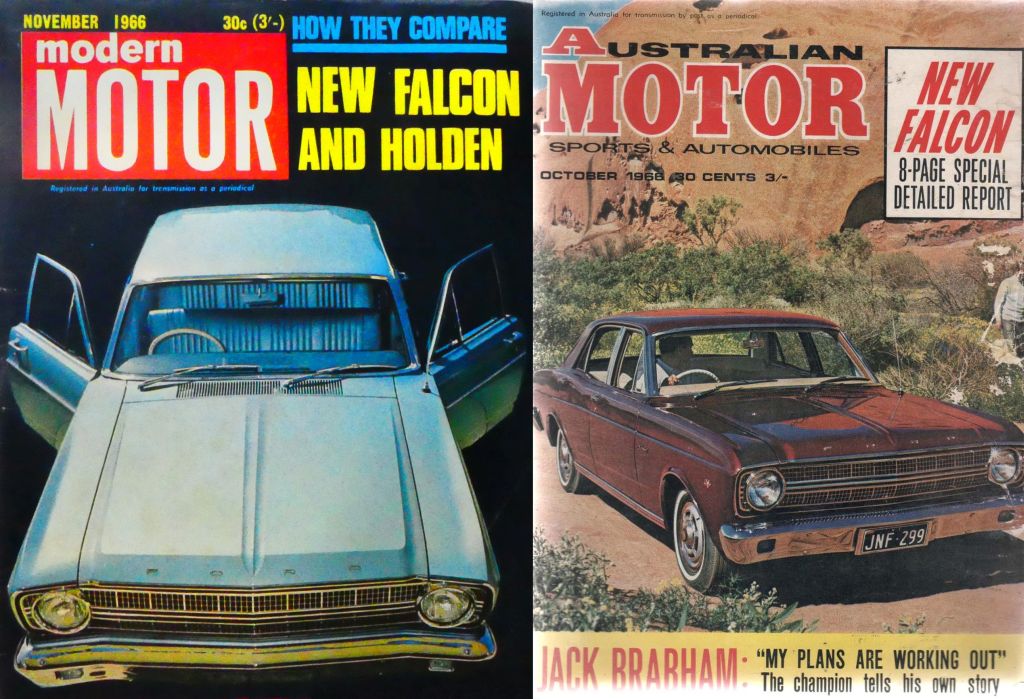
David added:
“Particularly from XR onwards, you wanted it to look tough and rugged… Most important (was) recognizing who the target market was, which was primarily a family man, but someone who had some sporting inclinations. They didn’t want to be seen to be driving a drab vehicle, so having some style, some get up and go, was important… To me, that’s really what the essence of Falcon is.”
There have been several pivotal cars in Australia’s automotive history and the XR Falcon is one of them. It relegated GMH and Chrysler into catch-up mode. Simply, Ford was leading the market from second place, and it would do it again and again into the future. Predicted Wheels magazine when the range was launched
“Ford’s new XR Falcon has stolen a march on the opposition in the biggest possible way; we could be looking at the most influential new passenger car in Australia in years.”
The XR Falcon was awarded Wheels COTY for 1966 and Ford’s climb to market leadership began in earnest.
